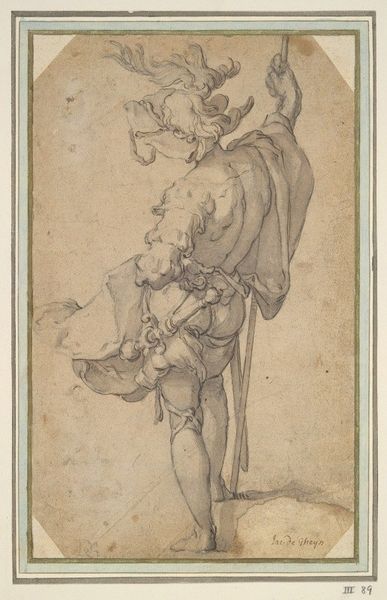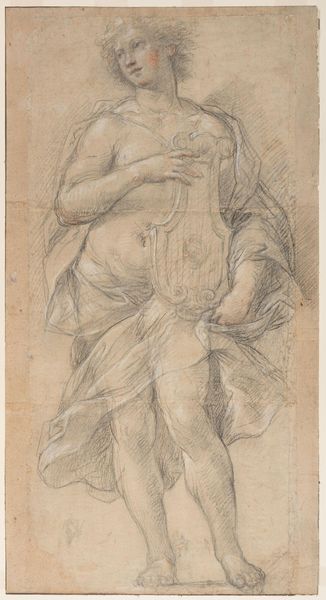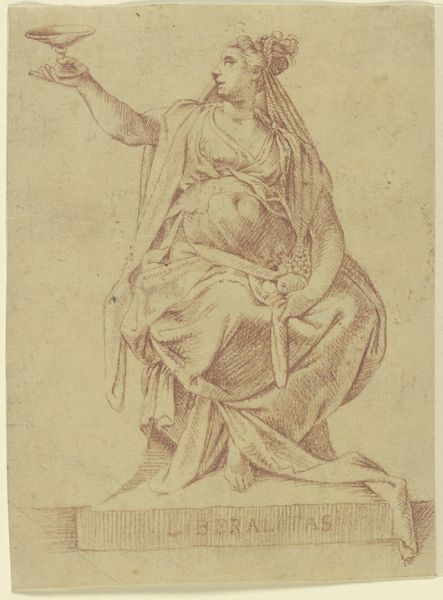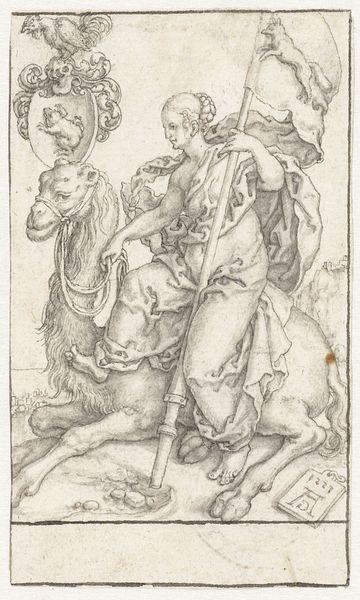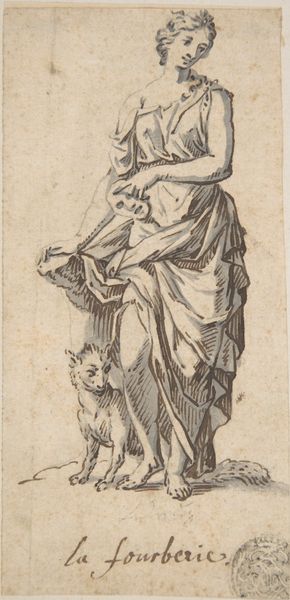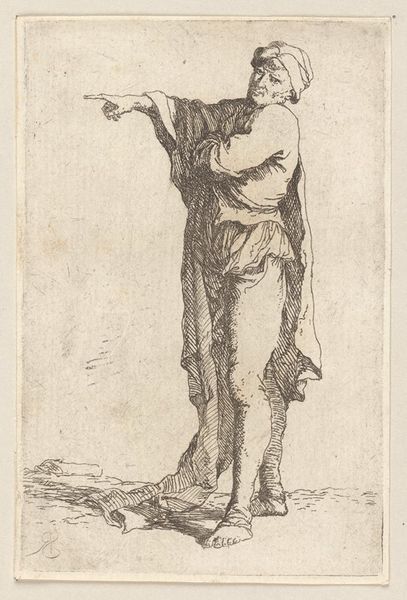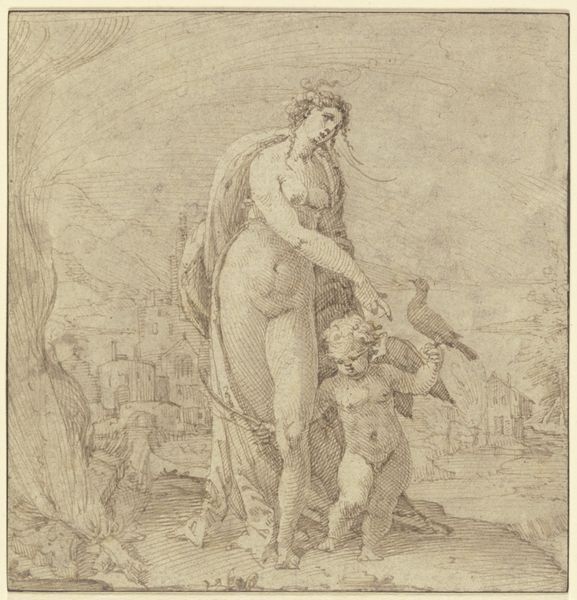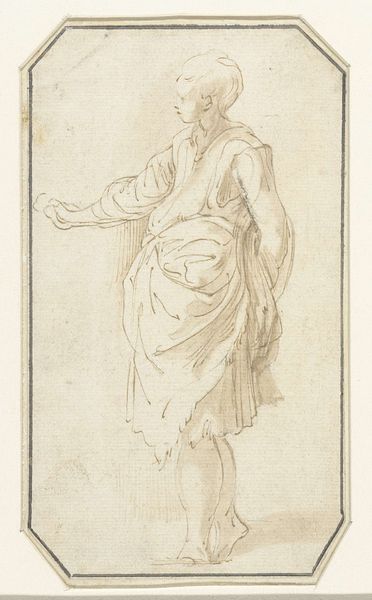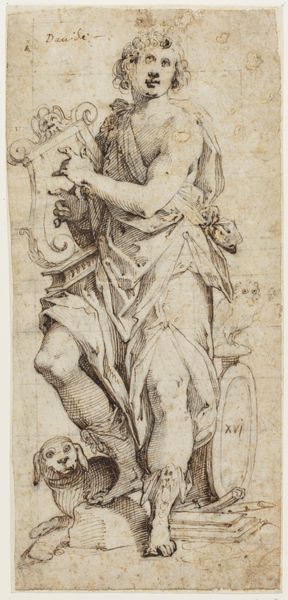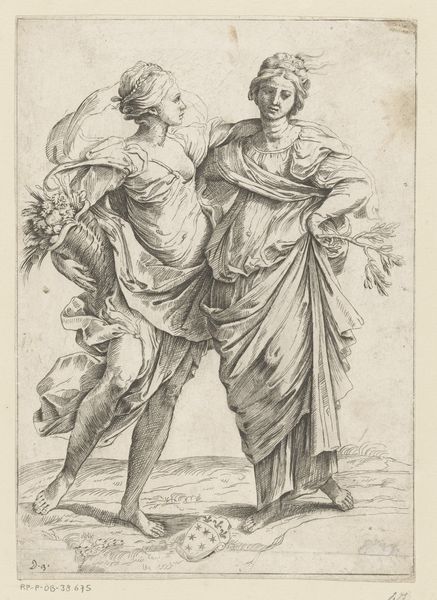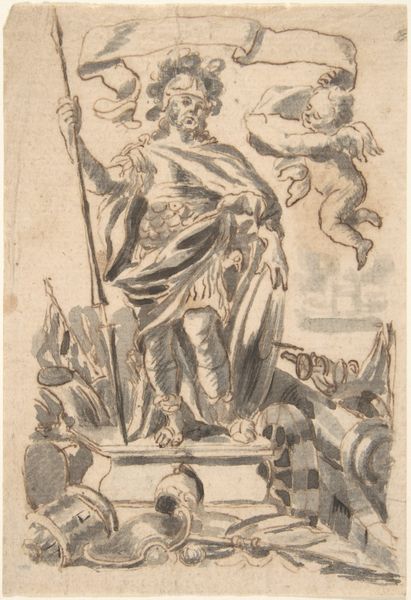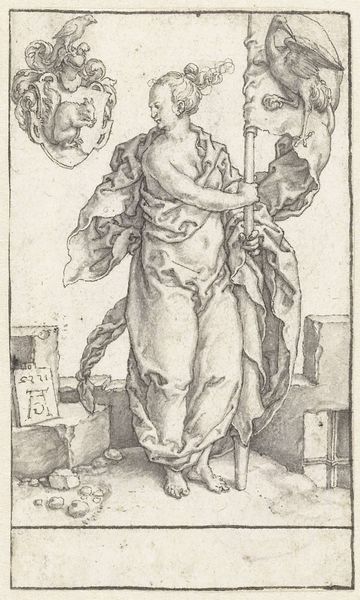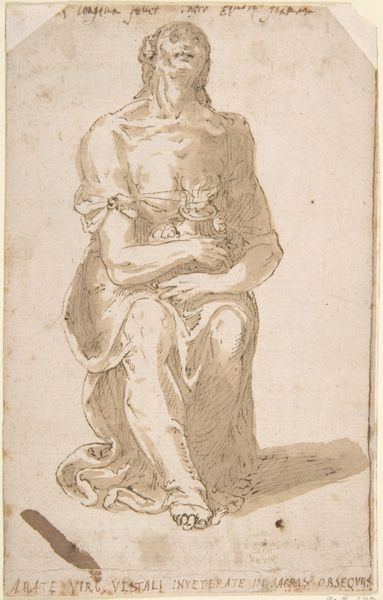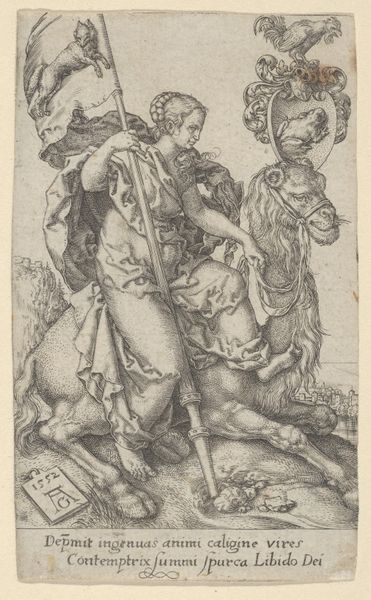
drawing, paper, ink
#
portrait
#
drawing
#
classical-realism
#
figuration
#
paper
#
ink
#
romanticism
Dimensions: height 198 mm, width 116 mm
Copyright: Rijks Museum: Open Domain
Editor: We're looking at Willem Jacob Herreyns' "Mourning Woman with Two Children," an ink drawing from the late 18th century. The somber mood is really striking, almost like a classical statue come to life, but filled with a palpable grief. What strikes you most about this piece? Curator: It's that tension you point out—the classical ideal meeting the raw emotion of grief. Consider the context: the late 18th century saw a rise in valuing sentimentality, but social expectations severely restricted women's emotional expression. Does this image offer a subversive glimpse into female pain, or does it simply reproduce societal expectations about mourning? Are the children symbols of hope or reminders of loss? Editor: That's fascinating. I hadn't thought about it in terms of those tensions. So, are you suggesting Herreyns might be making a statement about the limited roles available to women within that societal framework? Curator: Precisely. Her pose, leaning on the classical urn, almost feels performative, weighed down by the expectations of her station and gender. Yet, the active clinging of the child suggests a raw need, a connection beyond the constraints of performance. We might also consider how access to the rituals of mourning were themselves a signifier of social standing and, conversely, how public displays of inconsolable grief could destabilize these very hierarchies. Who was this woman and what does her sorrow say about broader societal power structures? Editor: That's a really interesting perspective. I will definitely view art differently now! Curator: Good. That kind of thinking reveals how a seemingly straightforward image can unlock layers of meaning, prompting vital discussions about history, identity, and social structures.
Comments
No comments
Be the first to comment and join the conversation on the ultimate creative platform.
